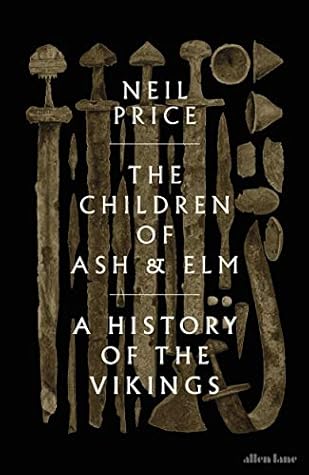More on this book
Community
Kindle Notes & Highlights
by
Neil Price
Read between
April 21 - May 29, 2022
This idea of being inside the wall, as distinct from what is beyond and therefore outside one’s control, is at the core of Viking-Age concepts of settlement and order. It is an insight into their way of thinking.
The mythology of the Vikings is one of only a tiny handful in all world cultures in which the divinities also practised religion. It suggests something behind and beyond them, older and opaque, and not necessarily ‘Indo-European’ at all. There is no indication that the people of the Viking Age knew what it was any more than we do.
For the Viking-Age Scandinavians, fate did not represent the absence of choice but rather the manifestation of a pre-existing truth. Free will existed, but exercising it inevitably led to becoming the person you always, really, had been.
However, it is possible, although strange to the modern mind, that such abilities were treated more as a sort of skill than anything else. Some people were good at carpentry, others had a fine singing voice, and your neighbour could become a bear when irritated.
Curiously, a hamingja also had independent will and in extreme situations might even choose to leave its person. The English saying that someone’s luck has ‘run out’ is actually using a Norse proverb—except that the Vikings meant it literally.
The Saga of Grettir, for example, actually describes the looting of a chamber grave that is a perfect match for the archaeology. When the thief digs down through the mound, he first cuts through the roof timbers and then falls into a foul-smelling space below, landing among horse bones at one end of a chamber. Stumbling forward and groping about in the dark, he feels the back of a chair, and then the shoulder of someone sitting in it—who then gets up and … Go read the saga.
In the West, three areas above all show the lasting effects of Scandinavian migrations and political contact, ranging from among the earliest of their overseas ventures to the latest: the maritime worlds of Scotland and the Northern Isles of Orkney and Shetland, the Irish Sea, and the Channel coasts of Frankia.
In the Hebrides, despite more than a millennium of earlier Celtic occupation, there are almost no non-Norse place-names at all. This suggests a total break without any continuity of habitation, and provides disturbing support for the theory of total population removal or replacement. In the Scottish islands as a whole, there is a high proportion of female genetic lineages shared with Norway, implying that Scandinavian women eventually settled in large numbers.
The central belt of mainland Scotland, stretching roughly across the country from modern Glasgow to Edinburgh, was also an arena of Norse operations, though the evidence has mostly survived as burials and remnants of plunder. Here are the northernmost finds of a special kind of stone grave marker known as hogbacks, a uniquely colonial monument that seems to have been commissioned by the Norse elites. There is also a group of elaborate Viking-Age burials at Loch Lomond, near Dumbarton, and a spectacular tenth-century hoard of silver, gold, and jewellery in Galloway. The ecclesiastical nature of
...more
There is Aud the Deep-Minded, stranded as a widow in Caithness on the north Scottish shore, who commissioned her own ship and captained it first to Orkney and then to the Faroes and Iceland; she became one of the country’s great landholders, and one of its first Christians.


